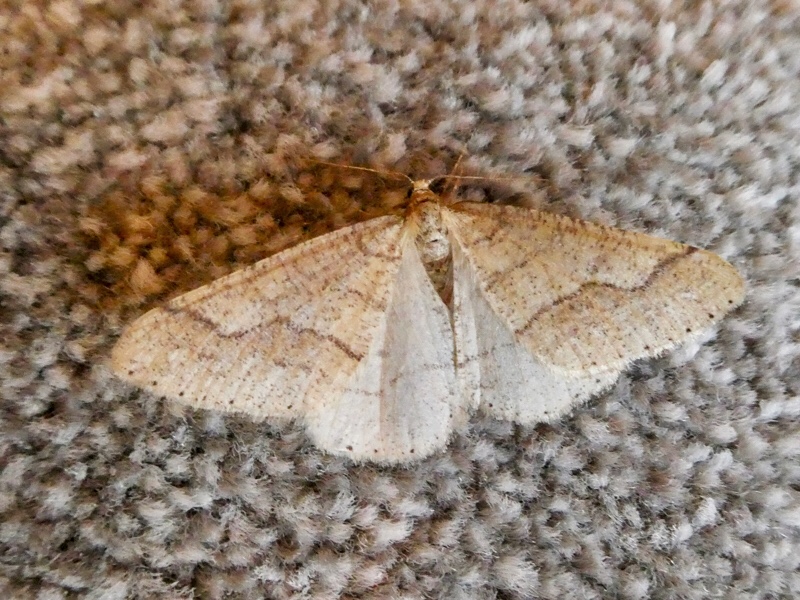Dotted Border - Agriopis marginaria
Dotted Border - Agriopis marginaria

I've not done much with the moth trap so far this year. The one time I did put it out in January it remained empty in the morning. Though I have found a few winter moths around the place. So this past weekend I put the trap out on the back lawn more in hope than expectation. Even though the night had been cold with temperature approaching freezing my pessimism was misplaced as I had a clutch of Common Quakers - Orthosia cerasi, and a single Small Quaker - Orthosia cruda. But a new one to me was a single Dotted Border, Agriopis marginaria. I found another individual a few days later roosting (do moths roost?) in the porch at the front of the house. Though I can't exclude that it's the same individual having moved around the house.
 This is an attractive member of the Geometridae family of moths. The forewing can be between 16-20mm across in males. But in the females it is very much different, as this is one of the species of moths where the females are flightless and you would be very hard pressed to link the two genders together if seen side by side (here's a few photos of the female from the UK Moths website).
This is an attractive member of the Geometridae family of moths. The forewing can be between 16-20mm across in males. But in the females it is very much different, as this is one of the species of moths where the females are flightless and you would be very hard pressed to link the two genders together if seen side by side (here's a few photos of the female from the UK Moths website).The moths can be seen mainly from February through to April, but can also be found from December onwards in mild periods. It's common and widespread through the UK. The list of plants that provide food for the larvae kids pretty extensive, showing that a polyphagous lifestyle can be a route to success. Plants plants include many broadleaved trees and shrubs - Oak, Hawthorn, Blackthorn, Birch, Hazel, Willow, Elms, Field Maple, Sycamore, Apple and Plum.
n Welsh the Dotted Border is called Rhisgl Ymyl Fraith referring to the dots along the edge of the wing. The binomial name Agriopis comes from agrios meaning wild and "opos" the face. This refers to the rough scales that can be found on the fronts. Unsurprisingly marginaria aludes to the spots on the border of the wings.
26 February 2019.
References:
NBN. Agriopis marginiara. https://species.nbnatlas.org/species/NHMSYS0021144223#overview. Accessed 26.02.2019.
Manley, C. (2015) British Moths: A Photographic Guide to the Moth of Great Britain and Ireland (2nd ed). Bloomsbury Natural History.
Waring,P. Townsend,M. And Lewington,R. (2011) Field Guide to the Moths of Great Britain and Ireland (2nd ed) British Wildlife Publishing.
Emmet,A.M. (1991) The Scientific Names of British Lepidoptera: Their History and Meaning. Harley Books: Colchester.



That's a good find!
ReplyDelete